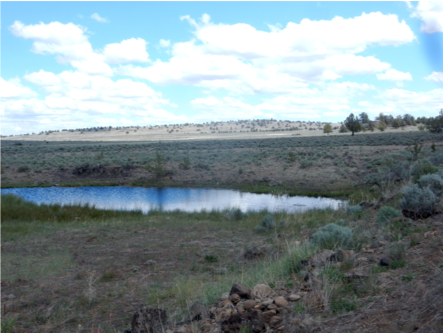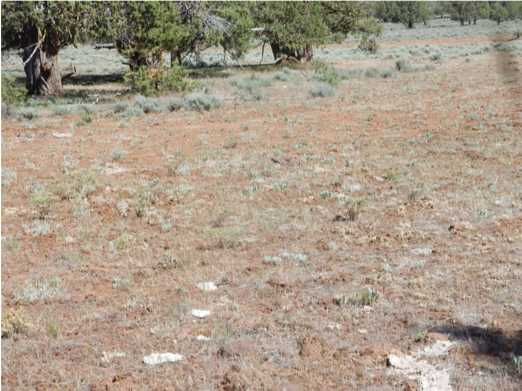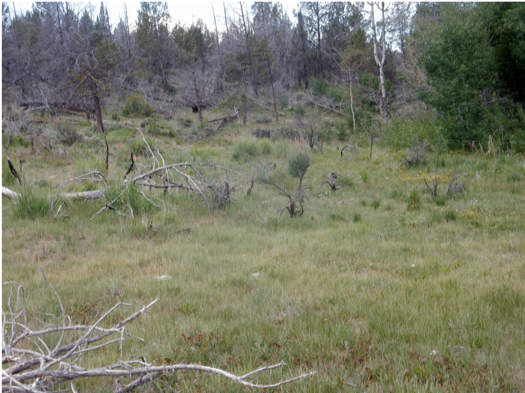By Felice Pace
Redwood Chapter Grazing Chair
North Group
Over recent decades the number of reporters and editors delivering news to Americans has declined sharply. Staff no longer have time to fact check claims made by spokespersons and in press releases. As a result, misleading and false information is being published as if it were verifiable fact.
It is with those thoughts in mind that I set off in early June to visit Northeast California’s Devil’s Garden Wild Horse Territory. Wild horses have been in the news and in the crosshairs of the western livestock industry. Was the “overpopulation” of wild horses being claimed by public land managers true on the Devil’s Garden and, if so, was land and water quality being degraded?
The war on wild horses
During the Trump years reports issued from federal agencies claiming that wild horses had multiplied uncontrollably, were devastating public lands and, consequently, had to be drastically reduced. Thousands of wild horses were rounded up, removed from public lands and offered for adoption for as little as a dollar per horse. Advocates fear that many adopted horses end up slaughtered for meat in Canada where consuming horse meat is legal.
Enacted in 1971, the Wild Horses and Burros Act (16 USC 1331-1340) “directs the Bureau of Land Management of the Department of the Interior and Forest Service of the Department of Agriculture to manage such animals on public lands under their jurisdiction.” But while the agencies designated wild horse territories as directed, they also allowed large numbers of cattle and sheep to graze the same territories. Now the agencies blame the horses for overgrazing, riparian and water quality degradation.
Claims of serious damage to public land and waters are not exaggerated, but horses are not the main culprit. There are many more cattle and sheep grazing those territories than there are wild horses. Furthermore, research shows that horses, like native pronghorns and elk, range widely, while cattle mainly graze, loaf and trample riparian areas and wetlands.
Wild horse and environmental organizations have labored to point out that it is commercial livestock, not wild horses, doing most of the damage. But, at least in part because of skeleton staffing at media outlets, the federal government’s claim that horses are to blame for public land and water degradation has dominated media reports.
The Devil’s Garden Wild Horse Territory
The Modoc National Forest’s wild horse territory is located on the Devil’s Garden Plateau, a 258,000 acre area averaging 5,000 feet in elevation. Devil’s Garden is part of Northeast California’s Modoc Plateau, a vast area of lava flows that includes many square miles of juniper and sagebrush steppe as well as dry forests dominated by Ponderosa pines. Depending on elevation, annual precipitation varies from as little as 5 inches to as much as 20 inches per year.
The plateau has a few streams flowing within riparian corridors bounded by lava walls, as well as wetlands of various sizes formed around emergent springs. Several smaller springs have been dug out to create waterholes.
 .
. 
Grazing is concentrated around spring-fed wetlands. Some of those were already dry in early June, the result of several years of drought.
Judging from direct observation and cattle and horse droppings, grazing use is concentrated around springs and other wetlands. Cattle droppings were much more numerous in those locations as compared to horse droppings. This confirms what researchers have found: cattle spend between 40% and 80% of their time on public land grazing within preferred riparian and wetland locations. Horses, on the other hand, range widely and do not graze within riparian areas for long periods.
 .
. 
As shown in the above photos, the condition of grasslands within the wild horse territory is variable. In some areas grass is sparse and cowpies plentiful while in other locations native bunchgrasses are fairly lush and the soil is well covered.
I plan to travel again to the Modoc’s wild horse territory this fall at the end of the grazing season. It is already clear, however, that conditions there parallel what others have found on public lands where wild horses are present. Unlike what has been reported by most media outlets, the lack of grass and damage to riparian areas, wetlands and water quality is mainly the result of livestock grazing.
An historic irony
You may wonder how wild horses, which went extinct in North America millennia ago, came to occupy western public lands. Today’s wild horses are descended from horses ranchers released on public land along with other livestock during earlier times. Horses were needed to work livestock, plow, haul hay and carry people.
By the 1930s, however, tractors and trucks were rendering horses unneeded for most ranch work. Furthermore, times were tough; the Great Depression drove many to abandon farms and ranches for city life. Ranchers abandoned horses by simply neglecting to bring them to the home ranch for winter.
It is descendants of those abandoned horses which form today’s robust wild horse herds. And it is the descendants of those who abandoned the horses who these days clamor to have descendants of their grandparent’s horses removed from public land at taxpayer expenses.
I’m against removing them. Let today’s ranchers bear the karma their ancestors’ abandonment of horses created. Better yet, let’s remove the cattle whose grazing behavior is incompatible with the health of public lands and waters.
Let the horses run; wild and free from persecution.
<<<<<<<>>>>>>>
Share your ideas on public lands as carbon reserves, proposed aquaculture on the Samoa Peninsula or any other topic by joining the North Group’s monthly video meetings. For meeting access directions contact Gregg Gold at greggjgold@aol.com or 707-826-3740.